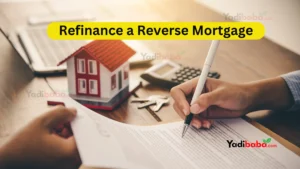how much does it cost to refinance a reverse mortgage : Low interest rates make it a good time to refinance a reverse mortgage to take some extra equity or to change the loan’s terms. There are costs in any financial transaction, and you need to be very cautious about refinancing a reverse mortgage. This article will detail the various costs associated with a reverse mortgage, coming in the way of refinancings.
What is a Reverse Mortgage Refinance?
A reverse mortgage refinance is replacing the existing reverse mortgage with a new one, performing it for better terms, or in cases where more home equity is to be tapped. A reverse mortgage is a loan designed for homeowners aged 62 years or older, who can access part of their home equity in cash without having to sell their home or make monthly mortgage payments.
You could refinance a reverse mortgage to
- Lower the interest rate and save probably on interest over time
- Increase your loan limit in case your home’s value has increased
- Switch from an adjustable- to a fixed-rate mortgage for more predictable costs
- Add a co-borrower, like a spouse, to the loan
Costs Involved in Refinancing a Reverse Mortgage
Even when compared with a traditional refinance of your mortgage, reverse mortgage refinance does not come for free. Here is a breakdown of the possible costs you may incur:
Origination Fee:
A new loan processed means the lenders charge a price up front called an origination fee. An origination fee may vary with the size of your loan but is usually capped by the Federal Housing Administration. Of the HECM type, reverse mortgages, which are the most common types; the origination fees are 2% on the first $200,000 of the value of your home and 1% on anything above $200,000 with a maximum of $6,000.
Mortgage Insurance Premium (MIP)
how much does it cost to refinance a reverse mortgage : One of the large costs associated with refinancing a reverse mortgage is that of the mortgage insurance premium. It protects the lender against losses if the amount of the loan balance at closing is more than the value of the home. An up-front MIP is typically required when you refinance. This amount usually comes with a charge of 2% of the appraised value of the home or FHA’s lending limit, whichever is less. An annual premium will also be charged to you for 0.5% of the loan balance.
Closing Costs
The refinancing of a loan involves various fees that all accumulate and are known as closing costs. These can include : APPRAISAL FEE: Before refinancing, an appraisal will have to be made to determine the current value of your home. It costs $300 to $600 or more, depending on the location and size of the house.
- Title Insurance: This insurance covers the lender against those defects that might be found in the title of the property. The cost is variable but often lies within a range of between $500 and $1,500.
- Credit Report Fee: Your credit should be checked by the lender to determine the character of your financial condition. Normally, this costs from about $30 to $50.
- Recording Fees: Recording fees are charges for recording the new mortgage at the local government office. The costs vary from place to place, going from $50 to $150.
- Notary Fees: Notary services are usually involved in witnessing the signing of the loan documents. This can be up to $100 to $200.
Servicing Fees
Some lenders will add a servicing fee because they are going to handle the loan after it closes. The servicing fee is usually a monthly charge of $25 to $35 against your loan balance.
Interest Rate
Probably the most important non-fee cost factor is the interest rate on your new reverse mortgage. Even if you can get a lower interest rate by refinancing, you have to be very mindful of how that interest will build up over time since there are typically no monthly payments required with a reverse mortgage.

Should You Refinance Your Reverse Mortgage?
While refinancing a reverse mortgage, it is always important to be cautioned. It is all dependent on the costs in comparison to the benefits that can be realized. Some of those critical factors to consider are:
- Break-Even Point: This is the time when you will start saving money from the new loan. Taking into consideration that you can live in your home long enough, then hitting this break-even point could make refinancing a great idea.
- Interest Rate Trends: If the interest rates have dropped way below the rate when your loan was obtained, it can indeed be a brilliant way to save within the life of your loan.
- Interest Rate Trends: If the interest rates have dropped way below the rate when your loan was obtained, it can indeed be a brilliant way to save within the life of your loan.
- This Increased Borrowing Capacity: If the value of your home is worth much more today in comparison to the time you bought your home, refinancing can help you unlock more funds.
- Personal Circumstances: Consider your age, health, and whether you have long-term plans for the home. If you are adding a co-borrower a younger spouse, for example refinancing could help the remaining spouse continue to stay in their home after your passing.
how much does it cost to refinance a reverse mortgage
So refinance, not from a money point of view, but also be aware of the cost implications. You will be better placed to make an informed decision on refinancing based on the fees of original and mortgage insurance premiums, closing costs, and mortgage rates. If the cost fits your financial goals and long-term plans, refinancing your reverse mortgage can be very instrumental in strategies for optimizing retirement finances. how much does it cost to refinance a reverse mortgage

